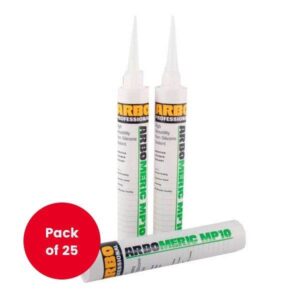What is a low modulus sealant?
Low modulus silicone sealants are an all-round, value for money solution for a variety of general applications. Low modulus sealants adhere to the majority of construction materials and can be used for indoor and outdoor glazing.
Low modulus sealants are stretchy, so they can accommodate more movement and offer better adhesion than other alternatives. Although not the most hard-wearing type of sealant, low modulus sealants boast considerable longevity.
Some of the most common applications of low modulus sealants include perimeter sealing, window glazing and sealing glass wall assemblies. While they are the best one-stop option for the above applications, low modulus silicone sealants don’t always have the same adhesion properties and durability as more specialised sealants, especially when it comes to exterior construction works.
Low modulus neutral sealant
Low modulus neutral sealants are tailored for exterior applications. Their excellent adhesion, weatherproofing properties and greater movement accommodation make neutral sealants the best choice for sealing UPVC window or door frames, panel joints and joints in concrete and other porous cement based materials.
Generally longer lasting than standard low modulus, neutral cure silicone is also often the preferred sealant choice because it is almost completely odourless. Neutral sealants also adhere to a wider range of materials than other low modulus alternatives. In addition to PVC-U and most other plastics, they can be used on aluminium, glass, stone and masonry.
The biggest downside of neutral cure sealants is the amount of time they take to cure, as well as the potentially higher cost.
Low modulus mastic sealant
Low modulus mastic sealants are famously hard-wearing and versatile. They are able to accommodate significantly more movement than high modulus alternatives, which makes them the preferred option for a variety of exterior joint seals. Typical applications where a low modulus mastic sealant would be used include sealing frames, brickwork and other substrates which have the tendency to expand.
Low modulus acrylic sealant
A great, paintable alternative to regular low modulus sealants, acrylic sealants are recommended for sealing UPVC, aluminium and wood window and door frames. Keep in mind that they are not as flexible as silicone sealants, and need to be applied in dry and warm conditions if used externally.
Low modulus glazing sealant
Low modulus glazing sealants are modified to provide extra strong adhesion to glass and cure to a clear finish. Their main applications include sealing around glass edges in windows and doors, bedding in glazing panels, and transferring the structural load from glass to the support system surrounding it.
What is the difference between high and low modulus silicone sealant?
Silicone sealants are generally categorised into two categories – high and low modulus. High modulus sealants are more rigid and hard-wearing, therefore able to accommodate less movement. They are usually used for indoor applications where a firmer final seal is required, such as baths, showers and sinks.
Low modulus sealants, on the other hand, are softer and more elastic, which makes them better suited for sealing tasks that require movement accommodation. They are perfect for exterior applications, especially when it comes to sealing joints, windows and doors. However, being softer and more flexible means low modulus sealants don’t withstand repeated cleaning quite as well as high modulus products.
Where to buy low modulus sealants?
We supply a range of low modulus sealants from a number of industry-leading brands, including Sikaflex low modulus construction sealants and Dow Corning low modulus sealants.

